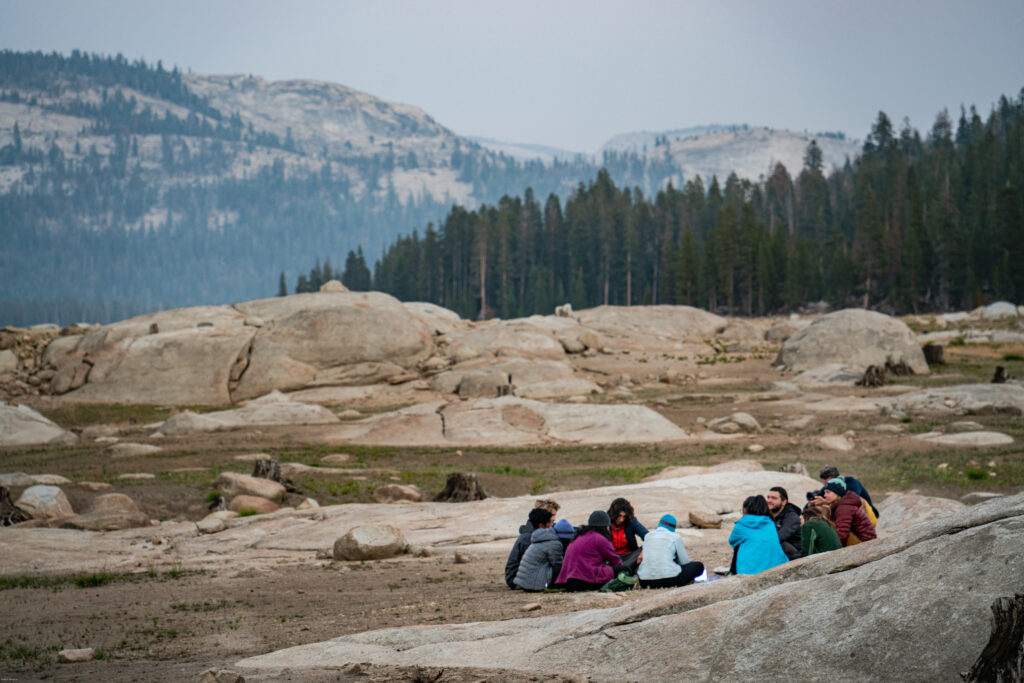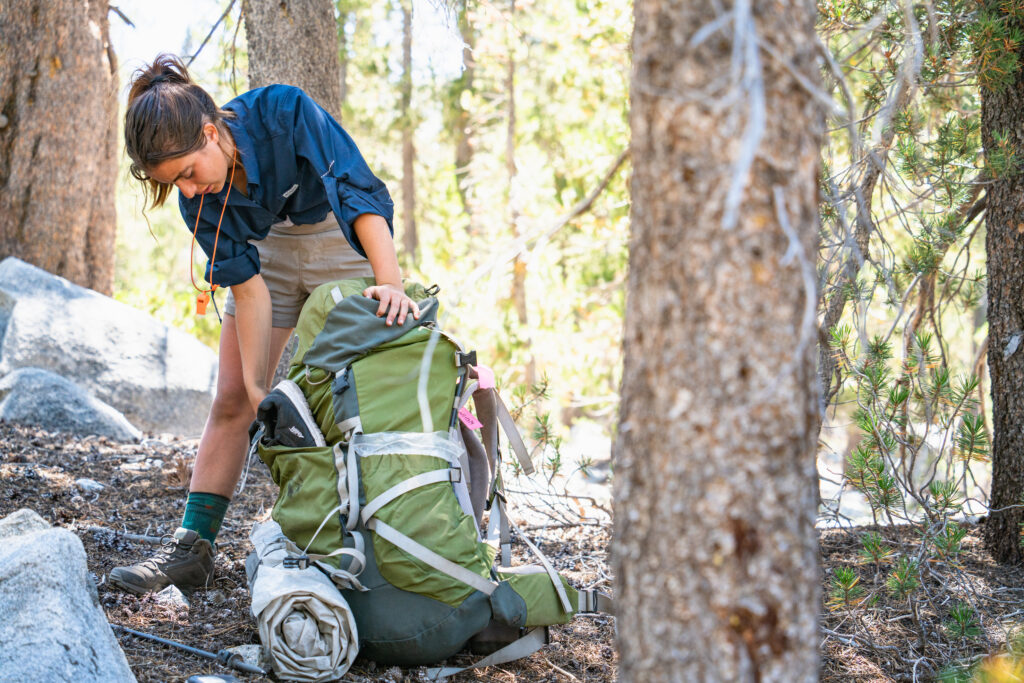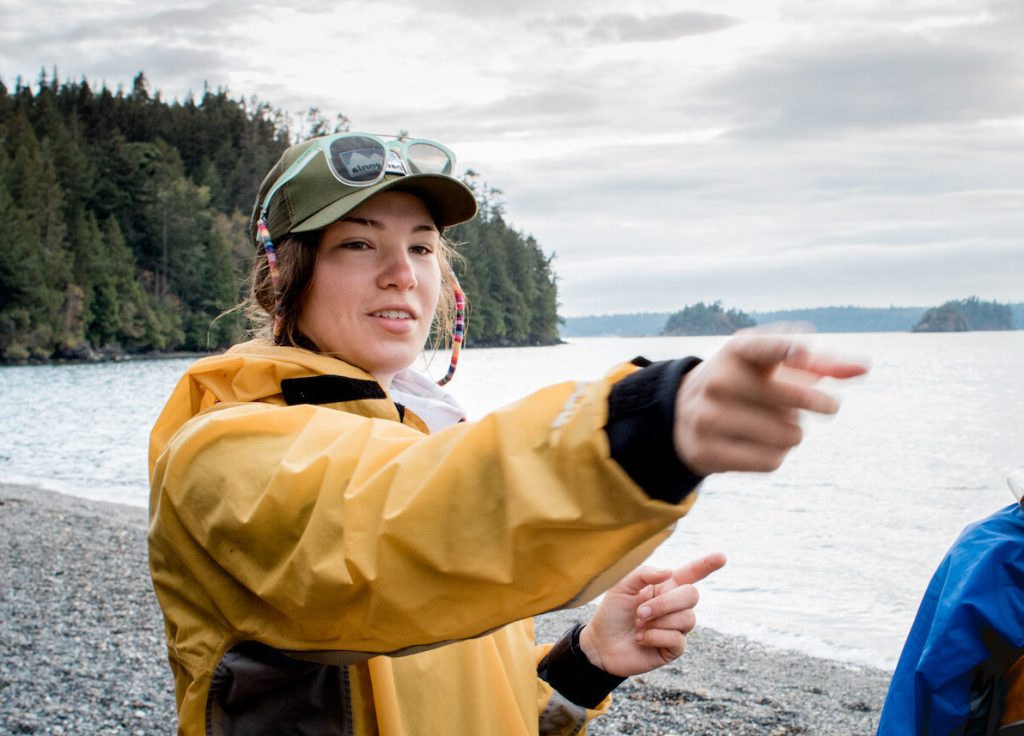Discover how Outward Bound expeditions and programs are intentionally structured to nurture self-advocacy in students.
Self-advocacy and self-care are vital tools for students and educators in any group or community-based environment, and especially on Outward Bound expeditions. We all know how difficult it can be to speak up for yourself. Articulating your needs takes a lot of energy and carries the anxiety of rejection.
“The structure of an Outward Bound course fundamentally lends itself to teaching students how to recognize and voice their needs, as well as be attuned to and care for the needs of others.”
I first realized the need for more self-advocacy tools when I led a discussion with a cohort of new Outward Bound Instructors in California a few years ago. As we swatted mosquitoes away, we sat down to talk about how to prioritize self-care in our work by recognizing the importance and value of our own needs. I asked the group a question about halfway through, “who has ever given up your own needs for the sake of someone else or a group?” The sounds of crickets in the evening air grew louder as my coworkers all raised their hands and looked around at each other. From that day on, I started seeking more ways to incorporate self-advocacy into my curriculum.

Photo by Dalton Johnson
How Does Outward Bound Provide the Perfect Environment for Learning This Skill?
I have always thought of an Outward Bound expedition or program as a microcosm of the world and society at large. Learning technical skills in the outdoors, regardless of how simple they are or how often a student will use them, can and often does increase confidence and a positive outlook in many students back home. Skills such as setting up a tent, cooking on a camp stove and having a group discussion to solve conflict are things that students will continue learning from in the months, and even years, following their Outward Bound course.
Self-advocacy is taught in simple lessons on expeditions in ways that can be easily applied to more personal aspects of a student’s life back home.
For example, on every expedition we teach a conflict resolution lesson known as CFOR, sometimes shortened to CFR, as a way to empower students to confidently resolve conflicts with their peers. Standing for Concern, Feeling, Ownership, Request, this acronym gives students a structured way to work through conflict and regulate emotional responses. It gives them a platform to express why they are concerned with something and how they are feeling, while also giving them space to own up to their own actions or reactions in the situation or empathize with another peer. The tool ends with a request for the other party. When students get home, they can use CFOR to facilitate conflict resolution in their own homes and communities.
Learn more about this conflict resolution tool here.
An outdoor or wilderness environment can provide many teachable moments. Having a positive experience to look back on in moments of stress in the “real world” can help remind us that we are capable, we have taken on challenges before and we have support from our community.

Photo by Dalton Johnson
How Do You Create a Learning Environment Where Self-Advocacy Can Be Strengthened in Students?
Woven throughout all aspects of an Outward Bound experience is the need to push through challenges, find community, seek healing and commune with nature. The structure of an Outward Bound course fundamentally lends itself to teaching students how to recognize and voice their needs, as well as be attuned to and care for the needs of others.
There Are Three Overall Guiding Principles for Teaching Self-Advocacy.
1. Teaching Self-Advocacy First Begins With Making Sure Everyone’s Basic Needs Are Met
Students simply can’t be empowered and feel secure enough to practice self-advocacy without their basic needs met. This is the very first thing we address with students when they arrive at the course and we begin packing for the outdoors. Basic needs include making sure everyone gets all the appropriate and correctly sized gear and that they know how to use the equipment and where to access first aid equipment. It also includes hygiene and making sure students know the proper ways to care for their health and hygiene while in the field.
Keeping everyone clean, hydrated, well-fed and well-rested is critical to maintaining a positive learning environment. Taking breaks from activities and offering solo time allows students to rest and process their learnings. Beyond physical needs, caring for students’ basic needs encompasses many aspects including, mental health, feelings of belonging in the group and homesickness.

Photo by Dalton Johnson
On our expeditions, we have both individual and group check-ins about basic needs. As an Instructor, I always want to make sure students feel comfortable, and sometimes a healthy dose of uncomfortable. Normalizing discussions about human bodily functions and other uncomfortable topics can be healthy for youth. By talking openly about our health, encouraging respectful questions and curiosity and even giggling together about awkward things such as pooping in the woods, we can empower our students to be open-minded, compassionate and informed members of their communities.
These discussions can be unpredictable and challenging, but they can also be some of the most beautiful, authentic moments of connection that many of us have ever experienced. Of course, we can’t fully control the outcome, but as educators, we can hold the container, cultivate the environment, and then, once we have an intentionally facilitated space for learning, we can take a step back and allow the group process to take over.
2. Self-Advocacy and Self-Care Are Inextricably Linked With Group Care
Group agreements and boundaries enable students to feel connected to a community while trusting that their peers value them and will prioritize their needs and hear their concerns if needed. If students feel alienated in a group setting, the likelihood of them advocating for their needs plummets.
“Setting boundaries as a group sets the tone for transparency and for individuals to advocate for their needs.”
It’s not enough to mention self-advocacy one time. By providing multiple opportunities to express individual needs and feedback, students have a structure to rely on if necessary. Timing matters too. On an Outward Bound expedition, we set a Community Living Agreement at the beginning of the trip. Students are asked to work together to come up with a set of values that are important to their experience and write it down. These values they all agree to and set the tone for a positive, proactive learning environment.

Photo by Charis Nichols.
Within the agreement can be group boundaries. These can include things like quiet hours, chore rotations, distribution of leadership roles, privacy agreements (bathrooms/changing tarps/etc.), and making space and time for cultural practices. It also includes being aware of the group’s energy, needs and capacity for the day. Setting boundaries as a group sets the tone for transparency and for individuals to advocate for their needs. In the same way, speaking your boundaries allows the group to come around you and support you. Reaching this ebb and flow is our goal as educators, and while it is hard work, it is a powerful lesson in community care.
3. Giving Autonomy Is the Way to Truly Empower Students to Self-Advocate
Students must have actual autonomy in order to feel that they can express their needs to the group and take time to care for themselves. As educators, if we are still imposing our original plan for the day, or the trip overall, regardless of changes in the group’s capacity, the student’s autonomy will vanish. If we attempt to sell them poorly contrived experiences, they will catch on and rightfully call us out. As leaders and educators, we are responsible for bringing compassionate, relevant programming to our students.

Photo by Rachel Veale
My good friend and coworker used to say to every group of students on the first day before they ever even left for the trail “This is y’all’s trip. This is for you.” By ensuring we are creating an environment for students to make autonomous choices, we hold space for students to be creative, decisive and collaborative individuals and team members.
Teaching Self-Advocacy Nourishes Students to Grow Into Self-Aware, Compassionate, Community-Oriented Leaders
We need more emotionally intelligent people in the world. Speaking up for yourself, advocating for yourself and asserting your own needs is a life skill that takes many years to develop. It is a muscle that requires strengthening, and as we work to grow in this area, we must also give ourselves compassion because it is hard work! But ultimately, we will be better off not just as individuals but as a community and a society if we can advocate for ourselves.
Inspiring Bold Futures
Learn more about how students are finding success in school, work and life by discovering their personal potential through Outward Bound’s local and regional outdoor education programs.
About the Author
Tilly Schoonhoven is a San Francisco Bay Area based educator, naturalist and poet, who goes by they/them pronouns. Tilly has worked in the outdoor industry for the past eight years, most recently at Outward Bound California as a Field Instructor, Equity Process Facilitator, Communications Contractor and Social Media Writer. They are passionate about bringing equity and justice to all corners of the outdoor industry, and they are known in their communities for engaging others in thoughtful and challenging dialogues to push the Outdoor industry forward. In their free time, Tilly enjoys taking care of their plants, and laying on the beach on a rare sunny day in San Francisco.




